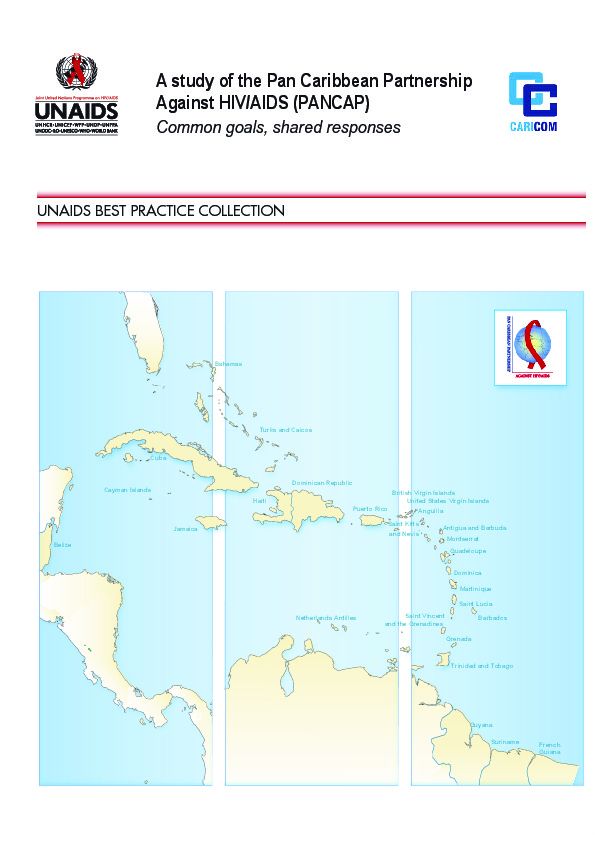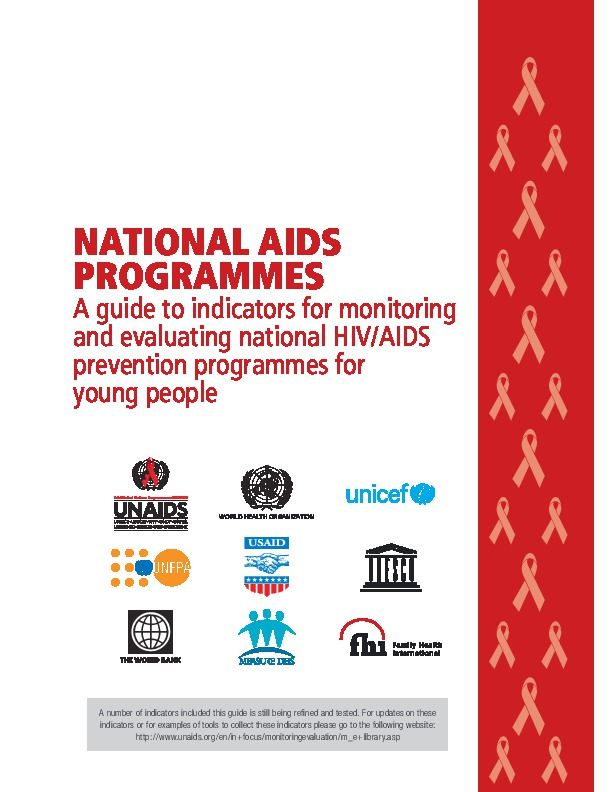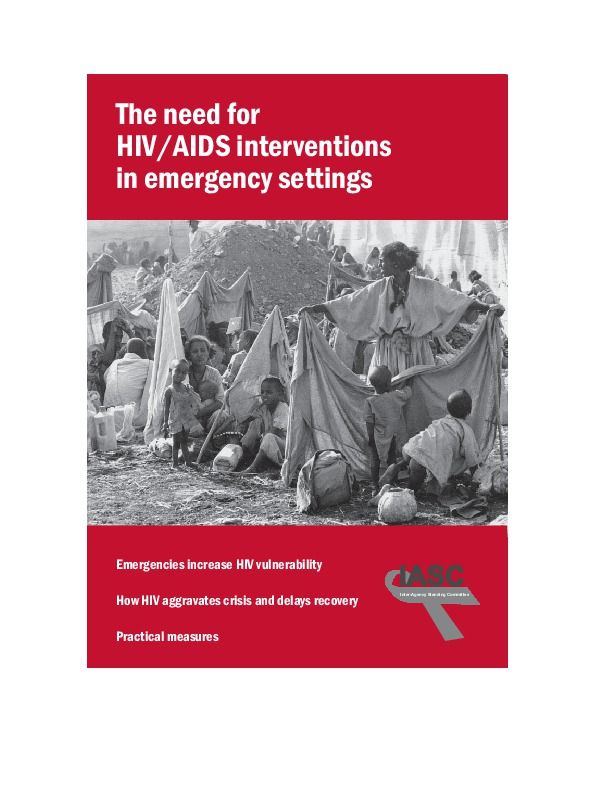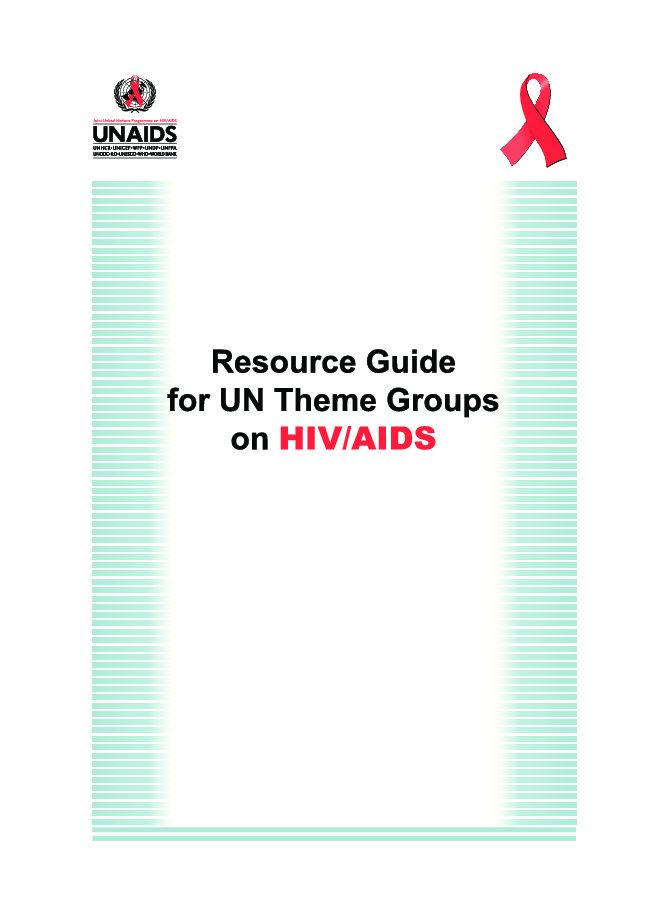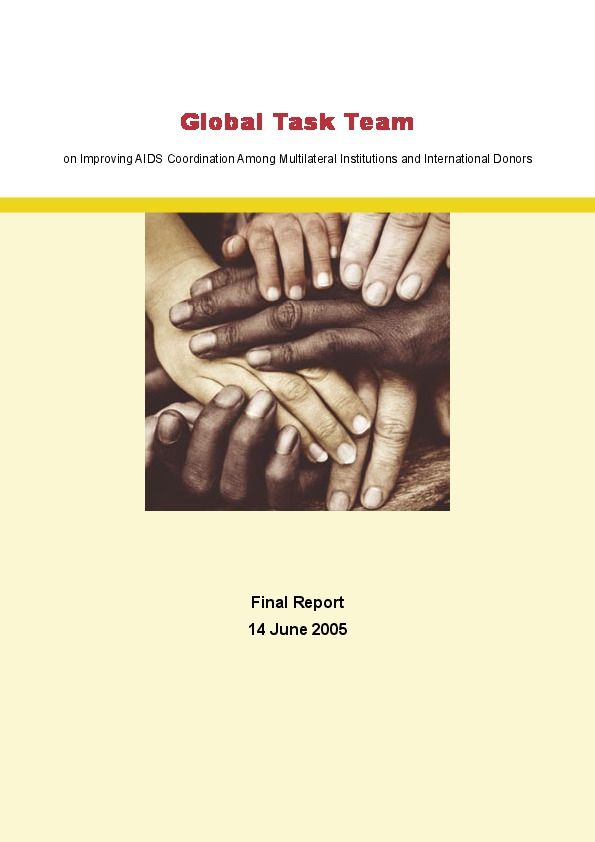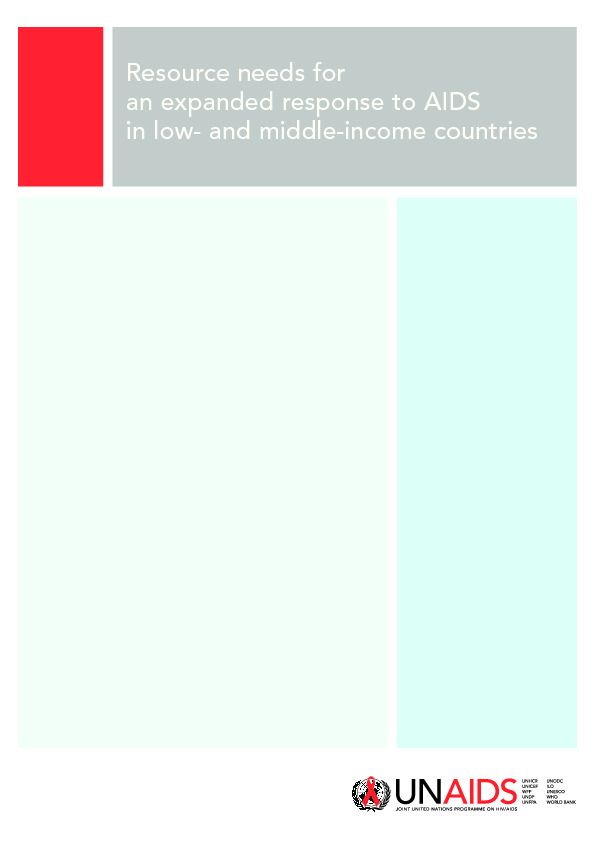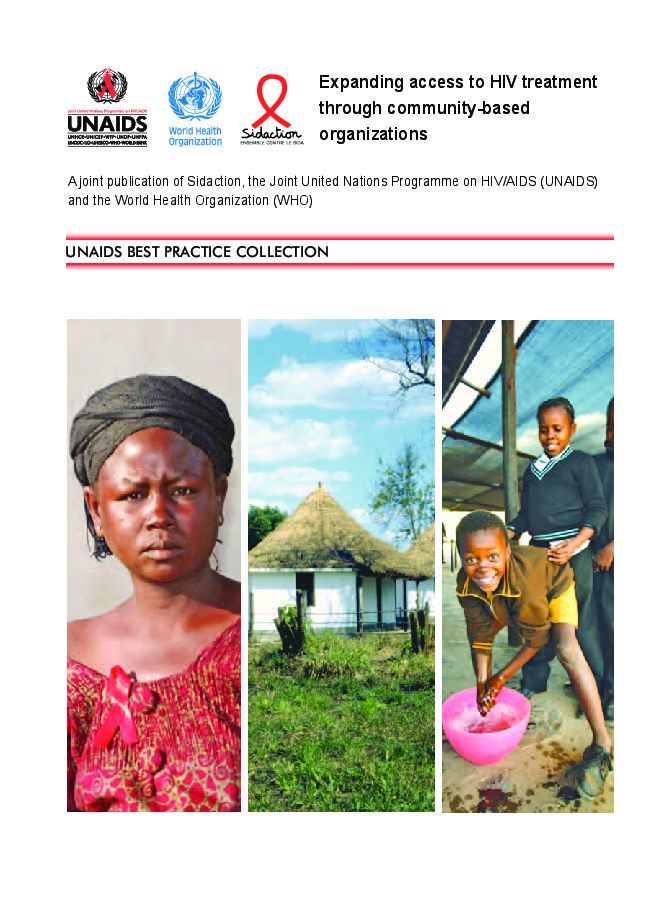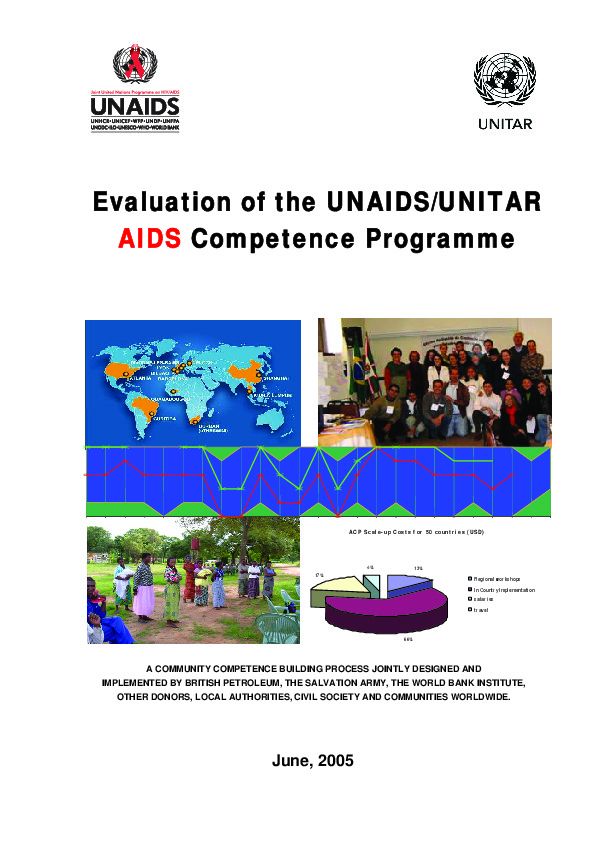Documents
A study of the Pan Caribbean Partnership Against HIV/AIDS (PANCAP) : common goals, shared responses
06 December 2004
This case study documents the experience of the Pan Caribbean Partnership Against AIDS (PANCAP) to mobilize the response to AIDS in the region. It highlights both the Partnership's successes as well as the challenges it continues to face in supporting effective action on AIDS in all of its twenty nine countries.
Documents
National AIDS programmes : a guide to indicators for monitoring and evaluating national HIV/AIDS prevention programmes for young people
15 December 2004
The present guide complements the indicators included in National AIDS programmes: a guide to monitoring and evaluation, by refining the indicators that have already been defined and proposing new ones that are in relatively early phases of development and use. These new indicators are included so as to ensure that policies and programmes benefit from the lessons learnt during the past decade and to provide experience of their measurement and use.
Documents
Cost-effectiveness analysis and HIV/AIDS
29 December 2004
Documents
The need for HIV/AIDS interventions in emergency settings
10 January 2005
For many years, humanitarian and relief organizations did not see HIV as a priority in emergencies, focusing their attention on lifesaving measures such as the provision of health care, water, food and shelter. HIV was not seen as a direct threat to life, nor was the need to address HIV/AIDS as a long-term development issue fully understood. With the evidence of the HIV/AIDS dimension in the recent southern Africa crisis this perception is now changing. Coordinated responses to increased HIV vulnerability in emergency settings are starting to be integrated into humanitarian and relief agency workplans at the earliest possible stage
of an emergency.
Documents
Resource Guide for UN Theme Groups on HIV/AIDS
24 March 2005
UN Organizations are increasingly being challenged to demonstrate their relevance as well as their ability to work together and make the best use of their collective resources. More than ever, therefore, the spotlight is on the Joint United Nations Programme on HIV/AIDS (UNAIDS) and its contribution to the AIDS effort at the country level, and on the performance of UN Theme Groups on HIV/AIDS.
Documents
Expanding access to HIV treatment through community-based organizations
03 August 2005
This UNAIDS Best Practice Collection publication is intended as a resource for civil society, groups of people living with HIV, national programme managers, international and national policy-makers and donors to better appreciate and support the concept of involving more community-based organizations in national plans for providing HIV care and treatment. In 2004, the nongovernmental organization, Sidaction, with support from UNAIDS and WHO, conducted a survey of the community response to HIV treatment needs in Africa. The document describes the self-reported experiences and achievements of community-based organizations already involved in providing care; this Best Practice provides strategic information on some of the needs, challenges and opportunities that are specifi c to community-based organizations in scaling up access to care and treatment; it demonstrates the current and potential value of their work and suggests ways forward to assess, support, and enlarge the scope and impact of that work. It is hoped that this Best Practice will inspire other countries and regions to replicate the untiring work of African community-based organizations, as well as demonstrate to both policy makers and donors the valuable contributions of civil society to the response to the AIDS epidemic, especially with regards to provision of care and treatment. This survey was the fi rst attempt to map and describe the contributions made by community groups, including those founded by persons living with HIV, in increasing access to antiretroviral therapy. Urgent and ongoing support to their efforts, in the context of a viable public health response, is a critical part of an effective and comprehensive response to HIV.
Documents
Monitoring the Declaration of Commitment on HIV/AIDS Guidelines on Construction of Core Indicators
10 August 2005
The purpose of these guidelines is to provide National AIDS Councils (or equivalent) with technical guidance on how to measure the revised list of core indicators for the implementation of the Declaration of Commitment on HIV/AIDS, adopted by Member States of the United Nations during the United Nations General Assembly Special Session on HIV/AIDS in June 2001. These guidelines provide technical guidance on the detailed specifi cations of the core indicators, on the information required and the basis of their construction, and on their interpretation. The guidelines also aim to maximize the validity, internal consistency and comparability across countries and over time of the indicator estimates obtained. In particular, the guidelines aim to ensure consistency in the types of data and methods of calculation employed.
Documents
Evaluation of the UNAIDS/UNITAR AIDS Competence Programme
25 August 2005
This evaluation measures the effectiveness and efficiency of the AIDS Competence Programme’s process and outcomes. The evaluation’s approach relies both on methods used in AIDS programme evaluations, and accepted sociological evaluation methods that define community capacity or the individual capacity (i.e.,economic, social, pedagogical and politically related outcomes).

